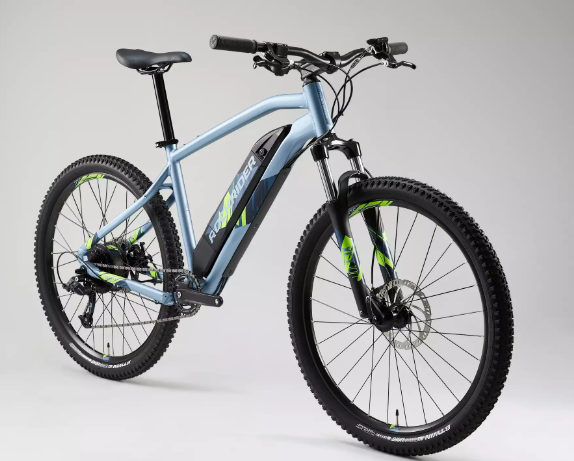
The question “Is it worth buying an electric mountain bike?” is a valid one, but it’s not as easy as just looking at the price and pros. There are several important factors to consider, including warranty, Pedal-assist activation, and more. Read on to discover whether it’s worth your money. A lot depends on the type of riding you’re planning to do. Here are some tips on how to decide which type of electric mountain bike would best suit your needs.
Pros
Whether you’re in the market for an electric mountain bike or a traditional bicycle, there are some important things to keep in mind before purchasing your new electric bike. First, consider the type of terrain you plan on riding on. An electric bike is more suitable for hilly terrain than flat, paved roads. If you plan on riding primarily on flat ground, you should choose an electric bike with full suspension. Otherwise, you may want to look for a bike with rigid forks, which are better for city riding and for bumpier terrain.
Secondly, an e-bike makes it easier to climb mountains and hills. Unless you’re particularly active, it’s difficult to climb mountains and uneven terrain. Moreover, an electric bike makes it easier to tackle even a nasty headwind. It’s a bike for everyone, not just avid cyclists. But what are the pros and cons of an electric mountain bike? In addition to providing an easier ride, an electric bike has other benefits.
Another pro to buying an electric mountain bike is its cost. You’ll save money on gas and parking costs by reducing the number of stops you make while riding. Electric bikes also allow you to go farther, faster, and more comfortably than conventional bicycles. If you commute on a daily basis, an electric bike can cut your commute time in half. You can also go farther on a single charge than you would with a traditional bike.
The price of an eMTB is higher than that of a traditional mountain bike. The battery and motors will add a significant amount to the cost, and you can expect to pay over EUR4,000 for a basic model. Another downside is that you’ll need to service your electric bike more often, since the motor’s higher torque requires more frequent servicing. And the parts on your drivetrain will wear out quicker.
Price
Prices vary widely. A decent electric mountain bike can cost anywhere from $3,000 to $9,000. But when you factor in running costs and regular maintenance, an electric bike can cost as much as $8,000.
Depending on the model, an electric bike can cost anywhere from $600 to $8,000. Most models start at $1500 and go up from there. However, there are models under $1000. With more electric bikes being produced every year, prices should decrease. However, if you’re hesitant about spending this much money, don’t be afraid to ask about a few options. A few ebikes may be out of your price range, but the benefits far outweigh the costs.
When comparing the price of an electric mountain bike, keep in mind that cheaper models typically have lower-quality parts. However, this doesn’t mean that they’re not safe. Some e-bikes are equipped with sturdier parts in later models. But you shouldn’t buy a cheap bike without knowing what it’s going to be used for. Make sure you know what the terrain is going to be like before you buy an electric mountain bike.
While some electric mountain bikes cost less than $1,000, they’re still high-end. Low-end models may use off-brand batteries and have minimal durability. In addition, lower-end models often don’t include the most essential components, such as hydraulic disc brakes. But more expensive models may have a longer warranty. You’ll also get better handling. With a good mountain e-bike, you can enjoy your daily commute on natural grounds. A dual-battery system makes it easy to carry along two bikes.
Warranty
The warranty on an electric mountain bike covers a number of different aspects. It provides a period of time during which the manufacturer or retailer will repair or replace parts that fail. However, there are some exceptions to this rule. In general, it is worth checking the warranty period on the specific bike that you are considering buying. If you are not sure, the warranty period for an ebike depends on whether you bought it from a reputable retailer or manufacturer.
NAKTO Electric Bikes and Leafy E-Bikes have a 1-year manufacturer warranty. These warranties cover the main bike components, such as the battery, controller, throttle, brake, and motor. The warranty period also covers the parts that are included in the price. Whether your electric mountain bike is covered by a warranty or not depends on the particular model. In addition to the warranty period, some electric bikes have longer warranties than others.
Warranty on electric mountain bikes covers the parts that come with the bike, such as the forks and frame. In addition, they cover the handlebar and stem, as well as the saddle and seat post. Some manufacturers offer additional coverage for certain components, including the brakes and lights. Additionally, the warranty also covers the bottom bracket, crankset, freewheel, and derailleur. Warranty for these parts will vary, but most electric bikes are covered by a comprehensive warranty.
If you are purchasing an electric mountain bike online, check if the manufacturer offers a warranty. If it has a two-year warranty, the manufacturer will cover the electrical components. During this time, the battery should still hold a minimum of 60% of its nominal charge. Other warranties may not include batteries and other consumables. Batteries, inner tubes, and brake levers are not covered under warranty. You should also check whether the warranty covers light bulbs and LEDs.
Pedal-assist activation
When choosing an electric mountain bike, you’ll need to consider pedal-assist activation. Pedal-assist is a mode that combines human power with an electric motor. You activate pedal-assist activation by pressing an on/off button on the handlebars. Pedaling energizes the motor, but you can still use the pedals to change gears for increased torque or faster speed. This mode makes cycling easy and flattens hills without straining your legs.
Pedal-assist activation is essential if you’re looking to ride long distances. Pedaling with electric assist can help you cover longer distances, climb hills faster, and even ride inclines. However, not all electric bikes have pedal assist, so make sure that you choose a bike that features this feature. Some electric bikes have different speeds, making pedal-assist activation a crucial consideration.
While throttle control makes cycling easier, it’s worth considering pedal-assist activation when buying an e-bike. Pedal-assist bikes are more efficient because they require you to pedal before the motor can engage. In addition, they’ll give you more range, allowing you to cover longer distances in less time. Whichever option you choose, make sure that you know how you want to ride and how you want the bike to feel.
Choosing a bike with pedal-assist activation is crucial if you want to enjoy mountain biking without the hassles of a traditional bicycle. Basic pedal assist systems have an optical sensor that knows the speed of your cranks, but it can’t tell you how much force you’re exerting. More advanced pedal-assist systems have sensors that vary with cadence and pedal pressure.
Weight
One of the first things you should consider when purchasing an electric mountain bike is how much you plan to weigh on the bike. Although the weight of a normal bicycle is generally less than 220 pounds, electric bikes usually have a maximum rider weight. Some ebikes can handle riders as heavy as 300 pounds, but most are not designed to handle more weight than that. The weight of an electric bike does not impact pedaling, but it may affect the performance of a bike when you are riding in rough terrain.
The weight of an electric mountain bike depends on the type of frame and battery installed. Road bikes are lightweight, while mountain bikes are designed to handle more rugged terrain. Because of their weight, mountain bikes tend to be heavier than road bikes. Folding electric bikes, on the other hand, are lightweight and easy to store, making them great for traveling and commuting. As a rule, smaller electric mountain bikes weigh less than larger ones.
When buying an electric mountain bike, make sure to consider your height and your reach. It is important to find a height that fits comfortably in your shoulders, back, and arms. You should also determine where the handlebars should be placed. Measure your ape index to ensure you get a proper handlebar placement. A large number of ebikes are more compact than a traditional bike. For a more comfortable fit, you should look for a bike with a higher frame than your current one.
Among the factors affecting weight are battery size and motor capacity. Electric mountain bikes typically weigh anywhere from forty to fifty pounds. The heavier you go, the more range you have to cover before your battery dies. For most people, an electric mountain bike should be comfortable and lightweight, but keep in mind that the battery size may be a factor for you. A traditional bike, by comparison, weighs around thirty to forty pounds.

